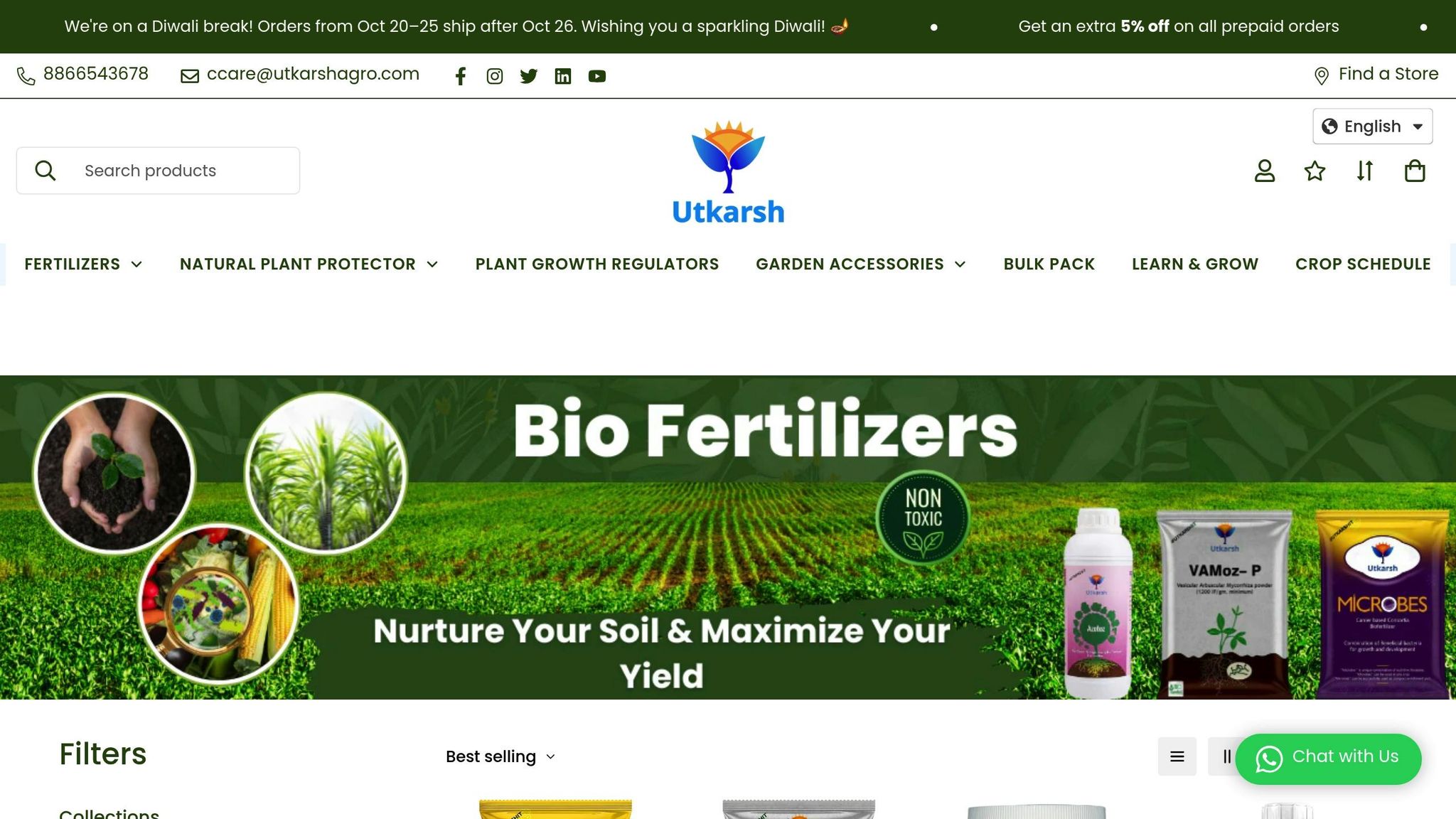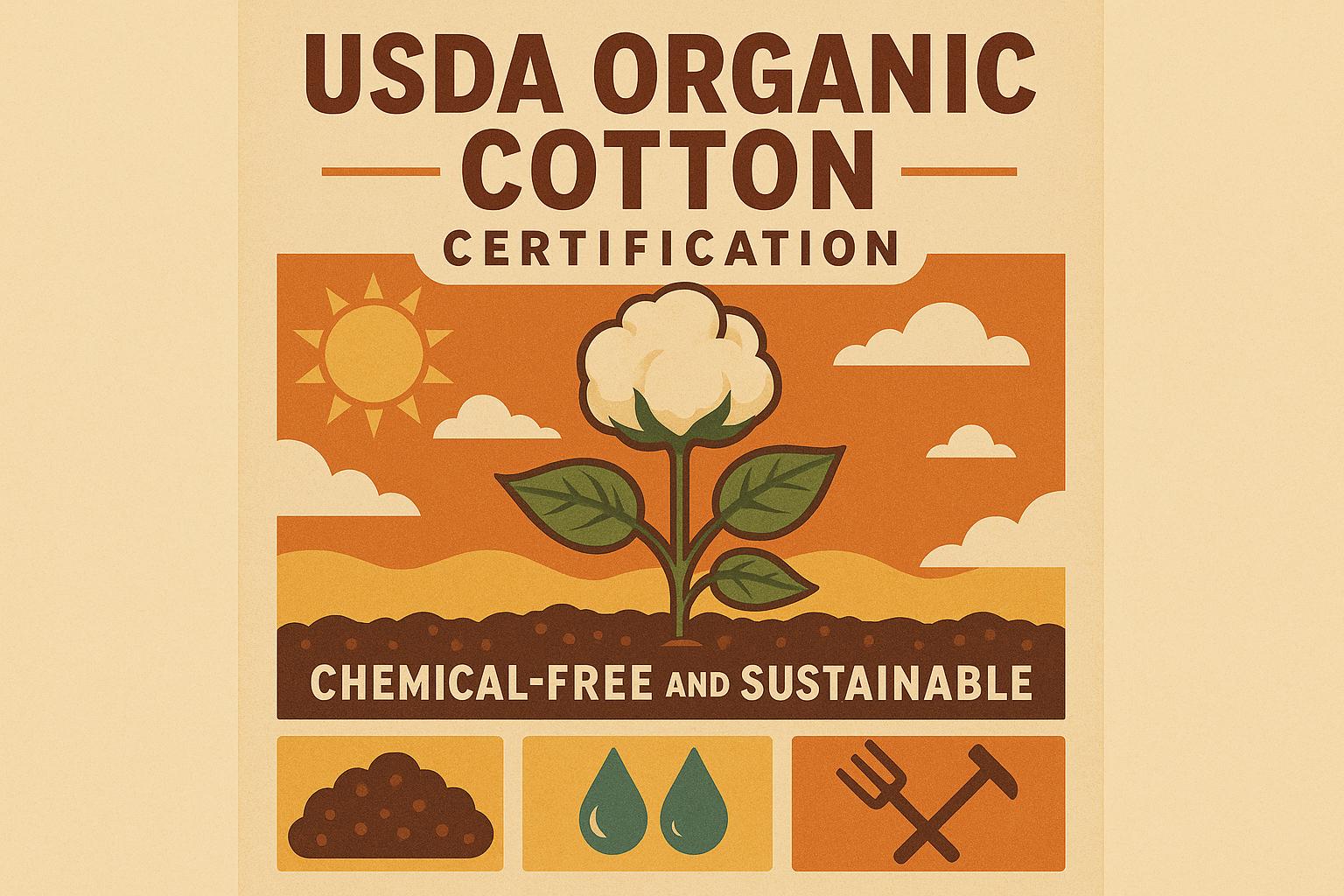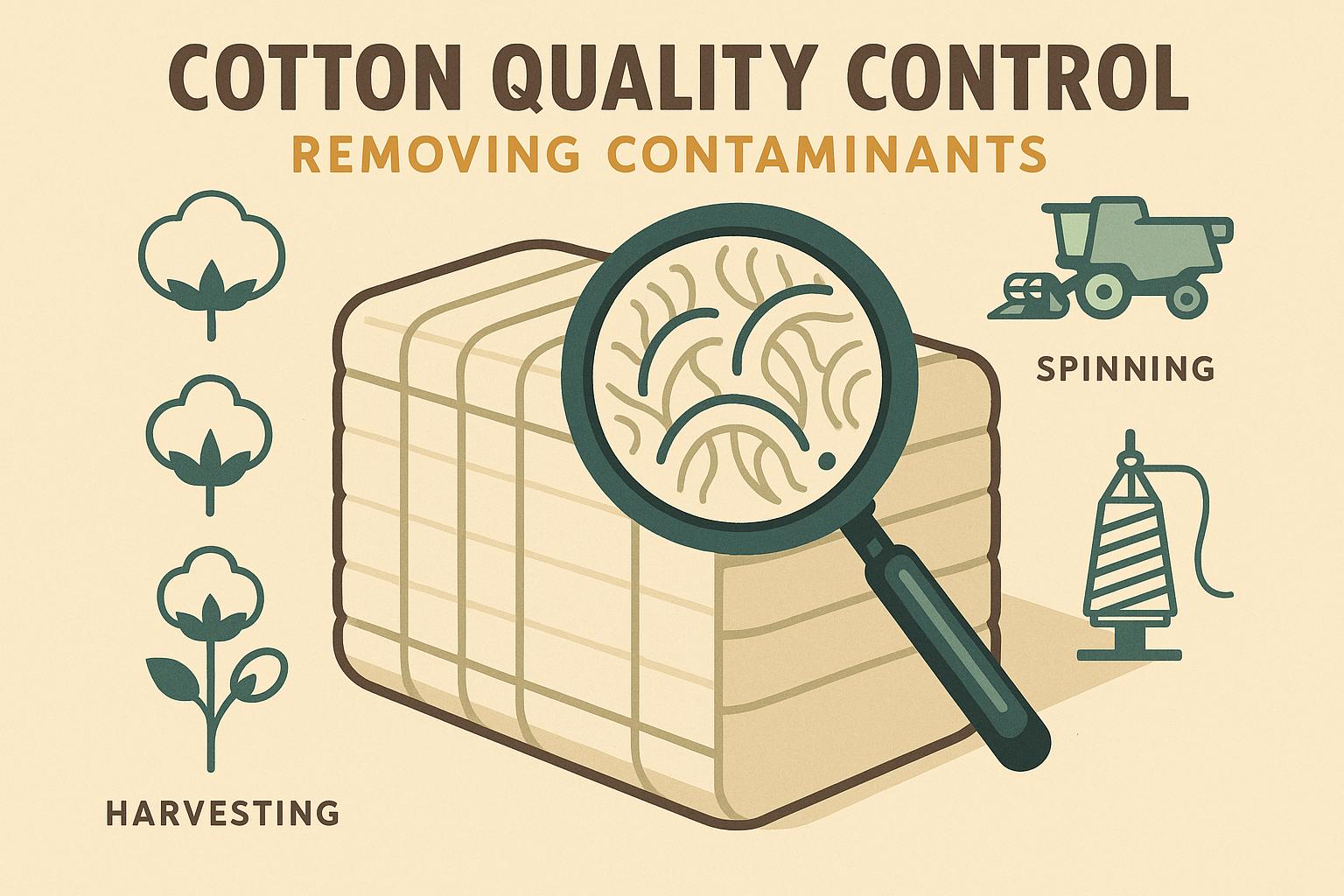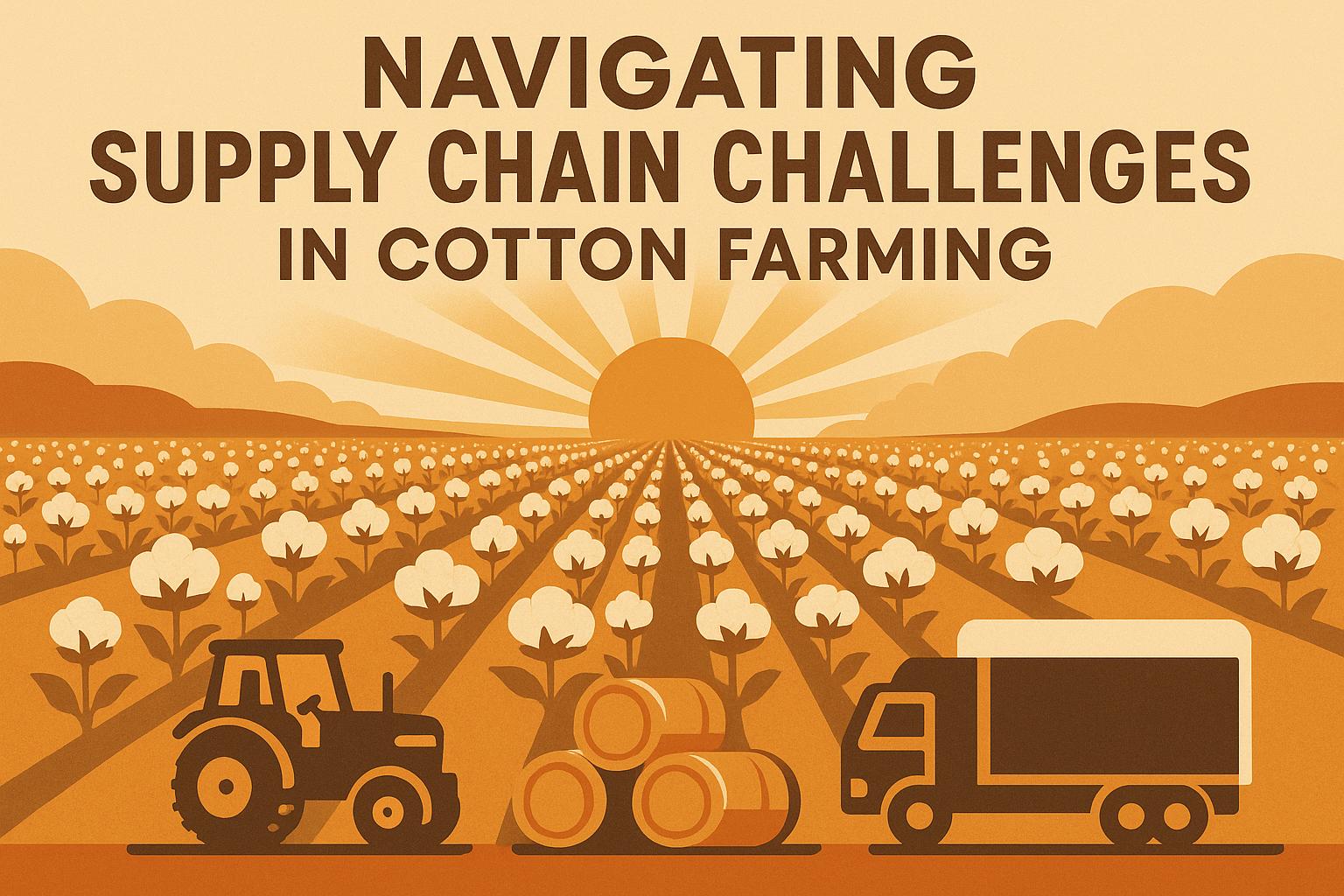Bio-based micronutrient fertilizers are made from natural materials like compost and plant waste, offering a sustainable way to improve cotton yields and soil health. Unlike chemical fertilizers, these work gradually by enriching the soil's organic matter, improving water retention, and promoting microbial activity. Cotton crops, which rely on micronutrients like boron, zinc, and iron, benefit from these fertilizers through better growth, higher yields, and improved fiber quality.
Key highlights:
- Yield Boost: Studies show up to 50% higher cotton yields with bio-based fertilizers.
- Soil Benefits: Reduced salinity (53.86%), improved water retention (36.72%), and increased nutrients like nitrogen (59.4%).
- Environmental Impact: 87% reduction in nitrate runoff and lower pollution risks.
- Application: Soil and foliar methods, tailored to local conditions, maximize results.
While upfront costs are higher than conventional fertilizers, the long-term benefits - better soil health, reduced input costs, and higher-quality cotton - make them a promising choice for farmers.
How Micronutrients Affect Cotton Quality and Yield
How Micronutrients Work in Cotton Plants
Manganese and zinc play a key role in cotton's internal processes. Manganese drives energy production by activating enzymes crucial for photosynthesis, while zinc supports protein creation and strengthens root systems. Healthy, well-developed roots allow cotton plants to absorb water and nutrients more efficiently, providing better stability and resilience.
Together, these micronutrients help cotton plants face challenges like drought and disease, ensuring steady growth and high-quality fiber production, even when conditions aren’t ideal. These cellular-level benefits ultimately lead to noticeable improvements in both fiber quality and crop yield.
Better Cotton Fiber Characteristics
The market value of cotton heavily depends on the quality of its fibers - specifically their length, strength, and fineness. Studies have shown that bio-based micronutrient fertilizers can improve these critical traits significantly.
Stronger fibers are particularly appealing to textile manufacturers because they result in more durable, higher-quality fabrics. This demand often translates into premium prices for cotton with superior tensile strength. Similarly, longer fibers contribute to smoother, more uniform yarns, which are highly valued in luxury textile markets. These enhancements allow farmers to fetch higher prices for their cotton. Recent trials with bio-based fertilizers further back up these quality improvements, showcasing their potential to elevate cotton's market performance.
Field Study Results on Bio-Based Fertilizers
Micronutrients don’t just work at the cellular level - they also deliver measurable benefits in the field. Research confirms that the advantages of manganese and zinc translate into better yields and improved fiber quality.
Between 2020 and 2022, Dr. Gurbir Singh and his team at the University of Missouri conducted studies in the Lower Mississippi Delta using biochar made from sugarcane bagasse. Cotton plots treated with 20 Mg/ha biochar (around 17,840 lbs/acre) saw a 63% reduction in soil nitrate levels and up to an 87% decrease in nitrogen run-off compared to untreated plots. These findings are particularly valuable for farmers dealing with saline or compacted soils. By improving water retention and minimizing nutrient losses, biochar-treated soils significantly enhance crop performance.
Additionally, nano Si treatments have shown promise in dry conditions, improving nutrient absorption and stress tolerance. These advancements offer cotton farmers new tools to maintain growth and yield, even as climate conditions become more unpredictable.
20 Acres Transformed: How Utkarsh Bio-Fertilizers Boosted Cotton and Chili Crops 🌾🍅🌶️ | Prod-CF-11

How to Apply Bio-Based Micronutrient Fertilizers
Applying bio-based micronutrient fertilizers effectively is key to achieving lasting benefits for both soil health and crop productivity.
Finding Bio-Based Fertilizer Sources
Cotton growers in the U.S. have access to a variety of bio-based fertilizers, including nutrient-rich composts, concentrated plant extracts, and microbial consortia like plant growth-promoting rhizobacteria (PGPR). These options not only enhance nutrient uptake but also help manage pests. When selecting fertilizers, prioritize products with verified nutrient content, clearly labeled micronutrient concentrations, and certifications like OMRI for organic use. This ensures you're working with reliable inputs. To find trusted suppliers, growers in major cotton-producing states such as Texas, Georgia, and Mississippi can consult local extension services. Additionally, resources like cottongins.org provide regional supplier directories. Choosing high-quality fertilizers lays the groundwork for the application methods described below.
Application Methods and Timing
Once you've secured quality fertilizers, the next step is applying them effectively. Two main approaches are soil application and foliar spraying. Soil applications, whether broadcast or banded, establish a strong nutritional foundation, while foliar sprays offer a quick fix for deficiencies during key growth stages like early squaring and flowering. A good strategy combines pre-planting soil amendments with targeted foliar sprays throughout the growing season to maintain nutrient availability. Regular soil and tissue testing can refine application rates and timing for better results.
For even greater precision, tools like satellite-based crop monitoring, soil moisture sensors, and variable-rate applicators can ensure nutrients are delivered exactly where and when they're needed. These technologies help maximize efficiency and minimize waste, making them valuable additions to your fertilization plan.
Adjusting for Regional Growing Conditions
Customizing your fertilizer strategy to local conditions can make a big difference. For example, in drought-prone areas like West Texas, bio-based fertilizers with water-retentive properties - such as biochar - are particularly effective. Biochar, derived from agricultural waste, improves water retention and nutrient-holding capacity in sandy soils.
In saline soils, common in regions like California and the Mississippi Delta, moderate applications of bio-organic fertilizers have been shown to lower salinity and boost yields. Research indicates that these practices can increase soil moisture by 36.72% and organic matter by 58.4% in saline-alkali cotton fields. To combat salt buildup, growers in these areas may need to apply fertilizers more frequently or in higher amounts. Meanwhile, sandy soils benefit from amendments that reduce nutrient leaching. Regional extension services are an excellent resource for tailoring fertilizer programs to specific soil types and climate conditions, ensuring the best possible results for your cotton crop.
sbb-itb-0e617ca
Bio-Based vs Conventional Micronutrient Fertilizers
Understanding the differences between bio-based and conventional fertilizers helps cotton growers make better decisions for their farming practices. Each option comes with its own set of strengths and challenges, influencing both immediate outcomes and long-term farming goals.
Pros and Cons of Bio-Based Fertilizers
Bio-based micronutrient fertilizers bring several benefits, especially when it comes to improving soil health and reducing environmental impact. These fertilizers enhance soil quality by boosting organic matter, improving moisture retention, reducing salinity, and lowering soil bulk density, which makes it easier for roots to grow.
One standout advantage is the significant reduction in nitrate runoff - up to 87% - which helps protect nearby water sources and lessens the environmental footprint of cotton farming.
That said, bio-based fertilizers come with some hurdles. Their performance can vary depending on the soil type and local conditions, requiring careful and precise application. They also tend to cost more upfront compared to conventional options. Another limitation is their slower nutrient release, which might impact short-term crop growth.
Research suggests that using a mix of 60% bio-based fertilizer strikes the right balance, improving yields while maintaining soil health in saline-alkali cotton fields. This approach allows farmers to stay productive while gradually transitioning to more sustainable methods.
In the long run, the benefits of bio-based fertilizers extend beyond the field, offering economic savings and better environmental outcomes.
Environmental and Economic Comparison
Beyond improving soil and crop yields, bio-based fertilizers offer long-term economic and environmental advantages for U.S. cotton farmers. While the initial cost is higher, these fertilizers lead to savings over time by improving soil health and reducing reliance on chemical inputs.
Field studies show that healthier soil conditions from bio-based fertilizers contribute to consistent productivity. Additionally, improved water retention lowers irrigation costs, and better soil health reduces the need for costly soil amendments. For instance, cotton farms in the Lower Mississippi Delta that used biochar reported not only healthier soil but also reduced water usage, cutting operational expenses.
On the other hand, conventional fertilizers might be cheaper at the start, but they often lead to long-term costs. Issues like soil degradation, salinity buildup, and loss of organic matter can require expensive remediation efforts to restore soil productivity.
Side-by-Side Comparison Table
| Metric | Bio-Based Fertilizers | Conventional Fertilizers |
|---|---|---|
| Yield Improvement | Up to 50% increase in challenging soils | Moderate, variable results |
| Initial Cost | Higher upfront investment | Lower initial expense |
| Long-term Economics | Savings through improved soil health | Higher remediation costs |
| Soil Health Impact | Enhanced organic matter, reduced salinity | May increase salinity, reduce organic matter |
| Water Retention | Improved soil moisture | Often reduces water retention |
| Environmental Impact | 87% reduction in nitrate runoff | Higher pollution risk, soil degradation |
| Nutrient Availability | Enhanced long-term nutrient retention | Immediate release, potential leaching |
| Application Flexibility | Requires tailored approach | Standardized application methods |
This comparison highlights the trade-offs between short-term affordability and long-term benefits. While conventional fertilizers deliver quick results at a lower upfront cost, bio-based alternatives stand out for their environmental benefits and potential economic savings over time. These factors make bio-based fertilizers a promising option for shaping more sustainable cotton farming practices.
Future Developments in Bio-Based Micronutrient Fertilizers
Emerging technologies are reshaping how we approach cotton crop nutrition, emphasizing precision, resilience to climate challenges, and leveraging natural plant support systems. These advancements build on earlier discussions about sourcing sustainable micronutrients for cotton farming.
Nanotechnology and Genetic Advancements
Nanotechnology is revolutionizing how micronutrients are delivered to cotton plants. Nano-carriers can transport nutrients directly to roots or leaves, releasing them in sync with the plant's needs while reducing waste. Early studies highlight that nano-encapsulation ensures a steady nutrient supply, significantly cutting down on leaching into groundwater.
This precision addresses a long-standing issue with traditional fertilizers - misaligned timing between nutrient release and plant demand. Instead of saturating the soil with nutrients that could wash away, nano-formulations provide nutrients exactly when cotton plants require them.
In addition to nanotechnology, genetic advancements are making a mark. New cotton varieties now feature enhanced root systems and nutrient transport capabilities, often paired with plant growth-promoting rhizobacteria (PGPR) consortia. These combinations are proving effective in helping cotton plants absorb bio-based nutrients, even in tough soil conditions.
By integrating improved genetics with tailored bio-based fertilizers, farmers could achieve better yields and higher-quality fibers. However, researchers stress the need for more field trials to pinpoint the best genetic traits for various U.S. growing conditions.
Together, these innovations not only improve nutrient delivery but also equip cotton farming to better handle the challenges of a changing climate.
Climate Adaptation and Farming Techniques
With climate change pushing agriculture to adapt, bio-based fertilizers are stepping up as a solution to help cotton crops endure extreme weather. These fertilizers enhance soil structure and water retention, making them particularly valuable during droughts or periods of intense heat.
In regions prone to drought, such as parts of the Southwest, bio-based formulations improve water retention and reduce salinity, helping crops thrive despite limited water availability.
One exciting development is biochar technology, which is gaining traction in the Lower Mississippi Delta. Trials using biochar made from sugarcane bagasse have shown promising results, improving soil water retention and nutrient-holding capacity. This allows cotton plants to better withstand difficult weather conditions.
The benefits of bio-based fertilizers extend beyond individual fields. They create soil systems that are more resilient to fluctuating precipitation patterns, buffering against both drought and heavy rainfall.
Precision agriculture tools are also playing a role in climate adaptation. Soil sensors and satellite imagery enable farmers to apply bio-based fertilizers more effectively, adjusting to real-time conditions. Digital platforms further support this by tracking long-term changes in soil health, helping farmers refine their strategies as climate conditions evolve.
Research Needs and Opportunities
While early results are promising, there’s still a lot to learn about how bio-based fertilizers perform over time. Long-term studies are essential to understand their cumulative effects on soil health, particularly in terms of soil structure and fertility across different U.S. regions.
Customizing fertilizers to regional needs is another priority. For instance, saline-alkali soils in the Southwest might benefit from bio-organic fertilizers enriched with organic matter and salt-tolerant microbes. Meanwhile, sandy soils in the Delta region could require amendments like biochar to improve water retention. Tailored solutions are key, as soil types, climate conditions, and cotton varieties vary widely across the country.
Other research areas include developing nano- and micro-encapsulated nutrient formulations specifically for cotton, breeding cotton varieties that are optimized for bio-based fertilizers, and studying the complex interactions between these fertilizers, soil microbes, and plant health.
For these innovations to succeed, farmer education and supply chain improvements will be critical. Platforms like cottongins.org can help connect growers to regional resources and the latest research, ensuring they stay informed as these technologies evolve.
The pressing need for climate adaptation is driving faster research timelines. Scientists are working diligently to create formulations that not only support cotton productivity but also ensure profitability in an ever-changing environment.
Conclusion
Bio-based micronutrient fertilizers bring a dual advantage to cotton farming: immediate yield improvements and long-term soil health benefits. Studies consistently show notable productivity gains and better soil metrics across various field trials.
For instance, field applications have demonstrated yield increases ranging from 18.9% to 50.32%, with boll numbers climbing by as much as 21.8%. Nano-silicon treatments alone have shown yield boosts between 10% and 25%.
Beyond productivity, these fertilizers help cut chemical input costs, stabilize pricing, and support sustainability certifications - factors that can enhance market competitiveness and overall value.
The environmental impact is equally compelling. By reducing chemical runoff, improving soil structure, and fostering biodiversity, bio-based fertilizers contribute to healthier watersheds and more resilient ecosystems. These environmental advantages also lay the groundwork for advanced methods to refine nutrient delivery systems.
Looking to the future, emerging technologies like nanotechnology and advanced cotton genetics promise even greater efficiency. When paired with precision agriculture tools, these innovations open doors to more targeted and sustainable farming practices. Local resource integration will play a key role in maximizing these advancements.
To get started, cotton growers should begin with a soil test and consult agronomists who understand the unique conditions of their region. Resources like cottongins.org can connect farmers with local stakeholders, suppliers, and peers who have successfully adopted bio-based fertilizer strategies.
Switching to bio-based micronutrient fertilizers is more than just trying a new product - it’s about building a resilient, high-yield future for cotton farming. With proven results, economic advantages, and growing technological support, these fertilizers provide a clear and sustainable path forward for producers dedicated to both productivity and environmental care.
FAQs
How do bio-based micronutrient fertilizers contribute to sustainable cotton farming?
Bio-based micronutrient fertilizers are transforming cotton farming by boosting soil health and cutting back on the need for synthetic chemicals. Made from natural sources, these fertilizers are kinder to the environment and less likely to disrupt ecosystems.
Packed with vital nutrients such as zinc, iron, and manganese in forms that plants can easily absorb, they help cotton grow stronger and produce higher yields. This approach not only leads to healthier crops but also reduces nutrient runoff, which can contaminate nearby water bodies. Over time, these fertilizers allow farmers to keep their fields productive while shrinking their environmental impact.
What are the long-term economic advantages of using bio-based micronutrient fertilizers in cotton farming?
Bio-based micronutrient fertilizers bring a range of long-term economic advantages to cotton farming. By boosting soil health and improving how efficiently nutrients are used, these fertilizers can lead to better crop yields over time. This means farmers might rely less on extra inputs, helping to cut overall costs and improve profit margins.
What’s more, these fertilizers align with sustainable farming practices. This could create opportunities for farmers to access premium pricing or incentives in markets that prioritize eco-friendly products. Additionally, using bio-based options can help farmers meet new agricultural regulations that emphasize sustainability.
What is the best way for cotton growers to use bio-based micronutrient fertilizers to improve yields and promote soil health?
Bio-based micronutrient fertilizers offer cotton growers a practical way to improve yields while sticking to sustainable farming practices. To get the most out of these fertilizers, keep these strategies in mind:
- Start with Soil Testing: A soil test is your first step. It helps pinpoint nutrient gaps and identifies the specific micronutrients your cotton crop requires.
- Time It Right: Timing is everything. Apply these fertilizers during critical growth phases, like planting or early vegetative stages, to ensure your plants absorb nutrients when they need them most.
- Choose the Right Application Method: Methods like foliar sprays or soil incorporation can make a big difference. These targeted approaches help nutrients reach the plants efficiently, cutting down on waste.
By customizing your fertilizer plan based on your field's unique needs, you can boost cotton yields while keeping the soil healthy for future seasons.


